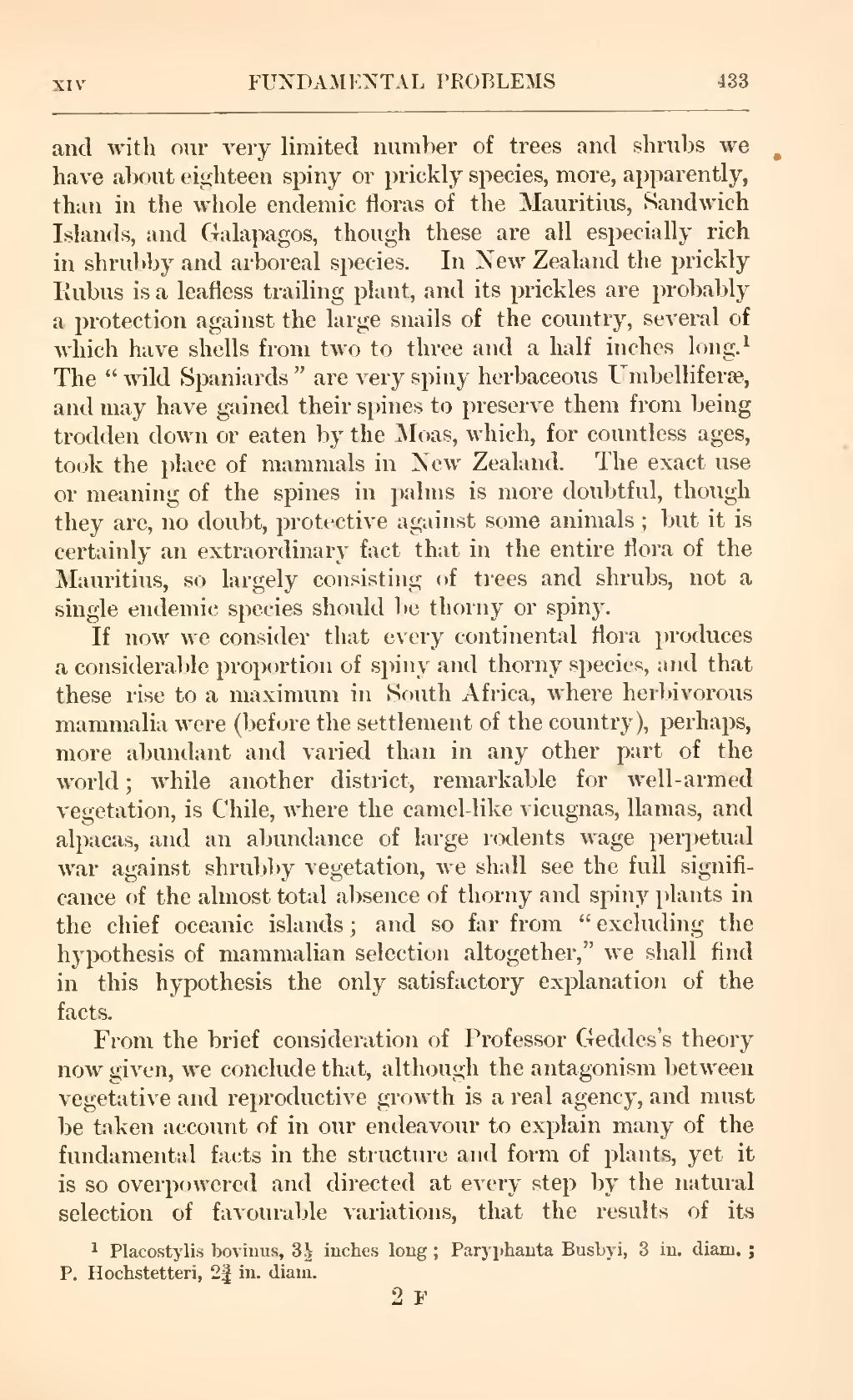and with our very limited number of trees and shrubs we have about eighteen spiny or prickly species, more, apparently, than in the whole endemic floras of the Mauritius, Sandwich Islands, and Galapagos, though these are all especially rich in shrubby and arboreal species. In New Zealand the prickly Rubus is a leafless trailing plant, and its prickles are probably a protection against the large snails of the country, several of which have shells from two to three and a half inches long.[1] The "wild Spaniards" are very spiny herbaceous Umbelliferae, and may have gained their spines to preserve them from being trodden down or eaten by the Moas, which, for countless ages, took the place of mammals in New Zealand. The exact use or meaning of the spines in palms is more doubtful, though they are, no doubt, protective against some animals; but it is certainly an extraordinary fact that in the entire flora of the Mauritius, so largely consisting of trees and shrubs, not a single endemic species should be thorny or spiny.
If now we consider that every continental flora produces a considerable proportion of spiny and thorny species, and that these rise to a maximum in South Africa, where herbivorous mammalia were (before the settlement of the country), perhaps, more abundant and varied than in any other part of the world; while another district, remarkable for well-armed vegetation, is Chile, where the camel-like vicugnas, llamas, and alpacas, and an abundance of large rodents wage perpetual war against shrubby vegetation, we shall see the full significance of the almost total absence of thorny and spiny plants in the chief oceanic islands; and so far from "excluding the hypothesis of mammalian selection altogether," we shall find in this hypothesis the only satisfactory explanation of the facts.
From the brief consideration of Professor Geddes's theory now given, we conclude that, although the antagonism between vegetative and reproductive growth is a real agency, and must be taken account of in our endeavour to explain many of the fundamental facts in the structure and form of plants, yet it is so overpowered and directed at every step by the natural selection of favourable variations, that the results of its
- ↑ Placostylis bovinus, 3½ inches long; Paryphanta Busbyi, 3 in. diam.; P. Hochstetteri, 2¾ in. diam.
